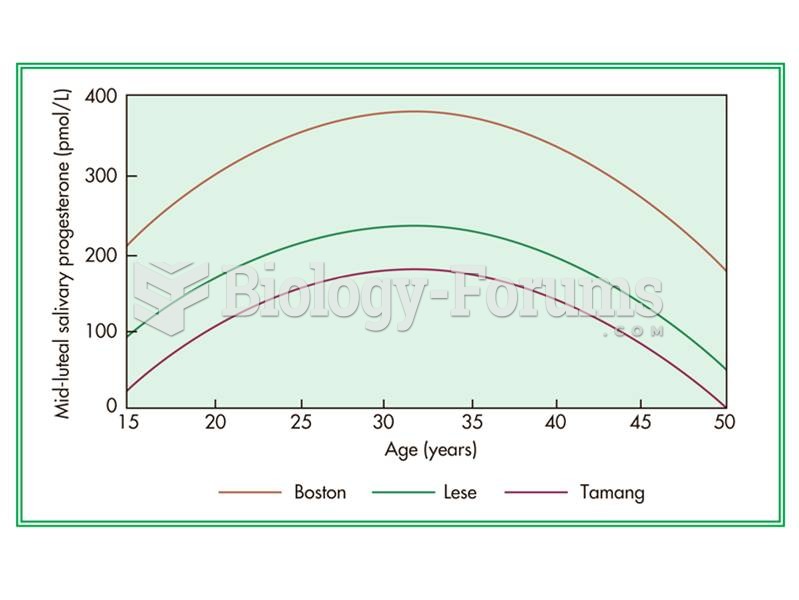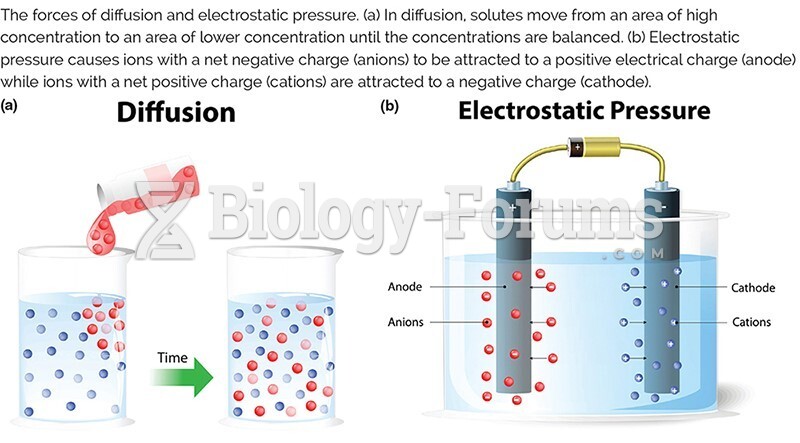|
|
|
The ratio of hydrogen atoms to oxygen in water (H2O) is 2:1.
A serious new warning has been established for pregnant women against taking ACE inhibitors during pregnancy. In the study, the risk of major birth defects in children whose mothers took ACE inhibitors during the first trimester was nearly three times higher than in children whose mothers didn't take ACE inhibitors. Physicians can prescribe alternative medications for pregnant women who have symptoms of high blood pressure.
There are over 65,000 known species of protozoa. About 10,000 species are parasitic.
More than nineteen million Americans carry the factor V gene that causes blood clots, pulmonary embolism, and heart disease.
Eat fiber! A diet high in fiber can help lower cholesterol levels by as much as 10%.







